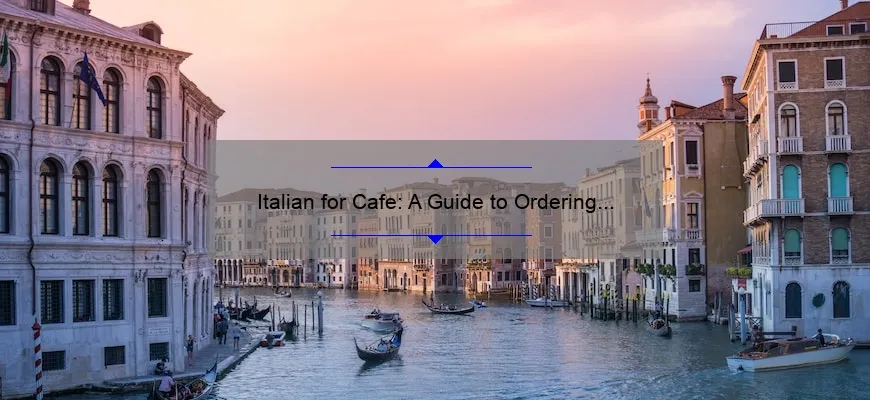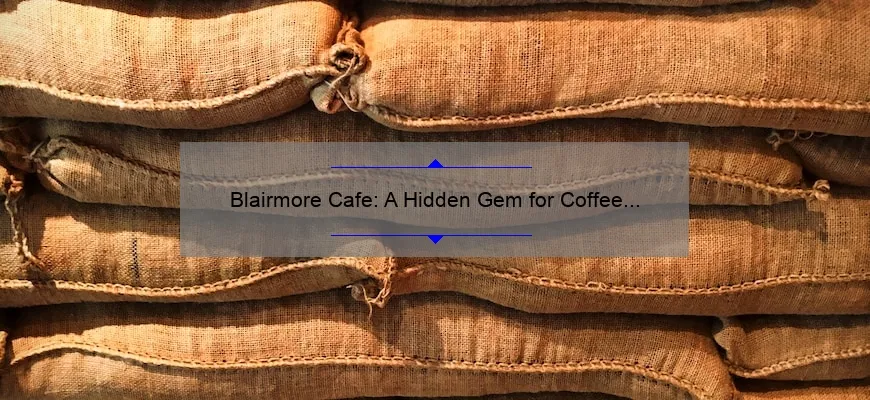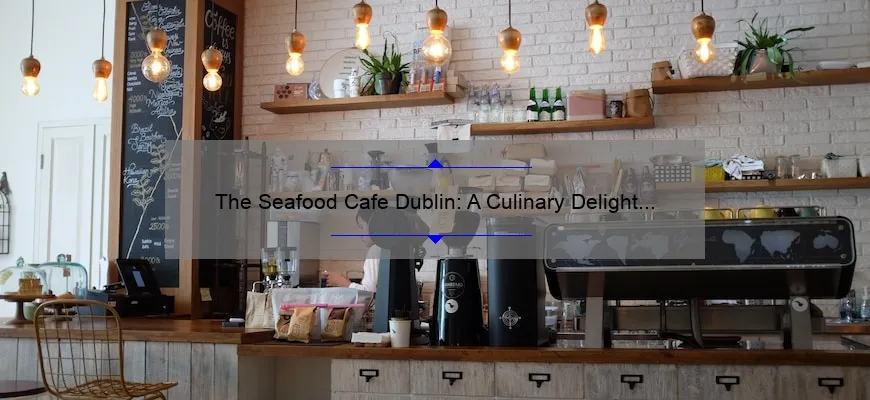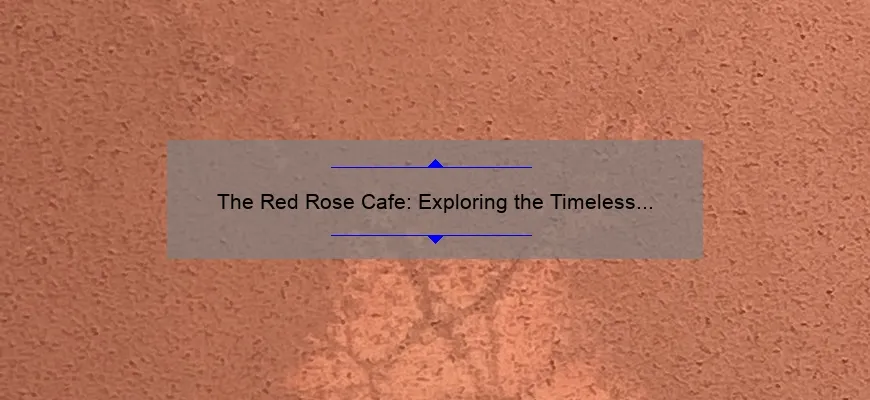Short answer: In Italian, the word for cafe is “caffè”, spelled with two f’s and an accent on the final ‘e’. It refers to a place where coffee is served and can also mean “coffee” in general.
- Why would you want to learn Italian for a cafe?
- Step-by-step guide: Learning Italian for a cafe
- Frequently Asked Questions about Italian for cafes
- How to effectively communicate in Italian at a cafe
- Mastering the key phrases and vocabulary for an authentic Italian cafe experience
- Taking your love for coffee global: Unveiling the secrets of Italian cafe language
Why would you want to learn Italian for a cafe?
Title: Unveiling the Allure of Learning Italian for Café Owners
Introduction:
Cafés are not just mundane establishments serving coffee and pastries; they embody a unique essence that transports us to distant lands, captivating our senses with aromatic scents and delightful tastes. Emanating from cozy corners, enthusiastic conversations and enchanting melodies seem to resonate effortlessly in this intimate setting. Amongst the various languages spoken in cafés worldwide, there’s an undeniable charm in the idea of incorporating Italian into the ambiance. But why would you want to learn Italian for a café?
1. Embrace Italy’s Coffee Culture:
Italy is renowned as the birthplace of espresso and has consistently upheld its reputation as a coffee-loving nation. By learning Italian, café owners immerse themselves in an authentic culture deeply rooted in the art of savoring a cup of joe. Communicating knowledgeably about Italian coffee styles such as macchiato, cappuccino, or ristretto demonstrates a genuine commitment to offering guests a truly traditional espresso experience.
2. Establish Authenticity and Nostalgia:
Imagine walking into an Italian café where aromas evoke memories of enchanting trattorias lining ancient cobblestone streets. By speaking Italian, café owners create an atmosphere reminiscent of classic European cafés painted by romantic novelists and celebrated filmmakers. Patrons seeking an authentic slice of Italy will appreciate conversing with staff members who convey warmth, capturing the essence they desire.
3. Enhance Customer Interaction:
Knowing another language inherently fosters stronger connections between cafe staff and customers while providing unmatched attention to detail in service provision. Greeting customers with “Buongiorno!” or engaging them in friendly chitchat showcases thoughtfulness exceeding conventional customer service expectations. This elevated level of engagement creates memorable experiences that keep customers coming back for more.
4. Elevate Culinary Offerings:
It is no secret that Italy boasts one of the world’s most lauded culinary traditions. Learning Italian empowers café owners to delve deeper into its gastronomic heritage, enabling them to accurately describe delectable treats like cannoli, panettone, or gelato. Sharing insights on regional specialties and traditional recipes exemplifies a profound passion for the dazzling variety of mouthwatering Italian cuisine.
5. Open International Opportunities:
Italian is spoken not only in Italy but also across a significant part of Europe. By becoming proficient in this illustrious language, café owners expand business prospects beyond domestic boundaries. Tourists and guests from around the world who appreciate authentic encounters will gravitate towards cafés where they can order their favorite pastries with confidence in Italian.
Conclusion:
Learning Italian for a café goes beyond acquiring linguistic skills; it unveils profound cultural experiences that suffuse the atmosphere with magic and intrigue. This endeavor allows café owners to exquisitely represent Italy’s coffee culture while crafting unforgettable memories for their customers. Ultimately, embracing the language of Dante Alighieri enhances authenticity, fosters connections, and establishes an unrivaled ambiance that transcends borders – truly encapsulating the spirit of an incredible Italian café journey.
Step-by-step guide: Learning Italian for a cafe
Step-by-step guide: Learning Italian for a cafe
As the aroma of freshly brewed espresso fills the air and an array of delicious pastries line the counter, there’s just something magical about an authentic Italian cafe. Whether you own a coffee shop yourself or simply visit one regularly, mastering the art of speaking Italian can enhance your experience and truly make you feel like part of la dolce vita. So, if you’ve been longing to impress customers with your linguistic skills or simply want to add some flair to your coffee-drinking routine, here’s a step-by-step guide on how to learn Italian specifically tailored for cafe aficionados.
Step 1: Immerse Yourself in Italian Language and Culture
To embark on this linguistic journey, it’s important to get into the mindset by immersing yourself in all things Italian. Surround yourself with Italian music, movies, and literature to familiarize yourself with the rhythm and sounds of the language. Discover famous Italian cafes through travel guides or virtual tours online, allowing you to soak up inspiration from their ambience and atmosphere.
Step 2: Start with Basic Vocabulary
Begin your language learning adventure by building a strong foundation with basic vocabulary related to cafes. Memorize essential terms such as café (coffè), barista (barista), cappuccino (cappuccino), gelato (gelato), panna (whipped cream), biscotti (biscuits), and so on. Practice pronouncing these words aloud until they roll off your tongue naturally.
Step 3: Learn Common Phrases and Expressions
To truly engage with customers or staff at an Italian cafe, it’s crucial to master some phrases and expressions commonly used in this context. Familiarize yourself with greetings like “buongiorno” (good morning) or “buonasera” (good evening). Expand your repertoire by learning phrases such as “un caffè per favore” (a coffee, please), “posso avere un cappuccino?” (can I have a cappuccino?), or “vorrei una fetta di torta” (I would like a slice of cake). Practice these phrases regularly so they become second nature to you.
Step 4: Utilize Language Learning Tools
To enhance your learning process, take advantage of modern language learning tools. Whether it’s using language apps like Duolingo or Babbel, online tutorials, or attending Italian language classes, these resources can provide structure and guidance to help you progress efficiently. Engaging with interactive content will help solidify your knowledge and improve both your speaking and listening skills.
Step 5: Practice Conversational Skills
Learning vocabulary and phrases is one thing, but being able to engage in meaningful conversations is the ultimate goal. Find native Italian speakers at cafes near you or join language exchange groups online where you can practice conversing with others eager to learn English. By immersing yourself in realistic scenarios, you’ll gain confidence in your abilities and improve your fluency.
Step 6: Embrace Italian Cuisine
Food plays a significant role in Italian culture, so why not combine two passions by exploring authentic Italian cuisine? Try new recipes during your free time – perhaps make homemade pasta or classic desserts like tiramisu. Engaging with traditional dishes allows you to further connect with the language while indulging in delicious flavors.
Step 7: Visit an Italian Cafe
Finally, put all that hard work into action by visiting an authentic Italian cafe! Immerse yourself in the atmosphere, interact confidently with staff using your newfound linguistic abilities, and indulge in Italian treats guilt-free. Being able to converse seamlessly will add an extra layer of authenticity to your experience as well as impress those around you.
Learning Italian for a cafe takes dedication but yields incredible rewards. By following this step-by-step guide, you’ll be well on your way to embracing the Italian language and culture in a triumphantly delicious manner. So, grab a cup of espresso, practice those phrases, and prepare to immerse yourself in the beauty and elegance of the Italian cafe scene. Buona fortuna!
Frequently Asked Questions about Italian for cafes
Frequently Asked Questions about Italian for Cafes: Mastering the Language of Caffeine Culture
Do you dream of opening a charming little Italian cafe, where the aroma of freshly brewed espresso fills the air and customers linger over delectable pastries? If so, it’s essential to immerse yourself in the language of coffee-loving Italians. To help you on your caffeinated journey, we have compiled a list of frequently asked questions about Italian for cafes. Read on as we unravel the mysteries behind common Italian coffee terms and provide insights into this rich linguistic world.
Q1: What are some essential Italian coffee terms that every cafe owner should know?
Italian coffee culture is synonymous with its unique vocabulary. Here’s a list of must-know terms that will elevate your cafe game:
1. Espresso: The quintessential heart and soul of any Italian cafe, espresso refers to a concentrated shot of finely ground, pressure-brewed coffee.
2. Cappuccino: A combination of equal parts espresso, steamed milk, and milk foam; cappuccino is typically enjoyed in the morning.
3. Macchiato: This term translates to “stained” or “marked.” It refers to an espresso shot “marked” with a small amount of steamed milk.
4. Ristretto: A shorter, more concentrated version of an espresso shot – perfect for those seeking an intense flavor experience.
5. Americano: An espresso shot diluted with hot water; ideal for customers who prefer a milder taste.
Q2: How do I correctly pronounce these complex Italian words?
Italian pronunciation can be intimidating at first glance, but fear not! With practice and our handy descriptions below, you’ll soon be sounding like an authentic barista:
1. Espresso (ehs-presso): Emphasize the second “s” sound rather than pronouncing it like “expresso.”
2. Cappuccino (kah-puh-chee-no): Stress the “chee” part – remember, it’s not a “coffeeno.”
3. Macchiato (mah-kee-ah-toh): Focus on the double “t” sound at the end.
4. Ristretto (ree-streh-toh): Pronounce the double “t” as a crisp, single sound.
5. Americano: Luckily, this one is simple! Just say it like you normally would – ah-meh-ree-kah-no.
Q3: What if my customers have additional requests for their coffee?
Every coffee lover has specific preferences, and your cafe should strive to accommodate them. Here are some common orders and appropriate responses:
1. Caffè lungo: A longer espresso shot; politely recommend an Americano instead.
2. Caffè doppio: Double espresso; enthusiastically fulfill their request for an extra shot of caffeine goodness.
3. Latte macchiato: Steamed milk “stained” with a small amount of espresso; craft it with precision and elegance.
4. Decafinato: Decaffeinated coffee; ensure you offer high-quality decaf options to cater to health-conscious or caffeine-sensitive patrons.
Q4: Are there any specific Italian phrases I can use to create an authentic cafe atmosphere?
Absolutely! Go beyond just menu terminology by incorporating these charming Italian phrases into your cafe ambiance:
1. Buongiorno!: Greet your visitors with a warm and friendly “good morning.” You’ll immediately transport them to an Italian caffeinated paradise.
2. Prego!: This versatile word means both “you’re welcome” and “please.” Use it when customers thank you or when offering assistance.
3. Mi scusi!: If you accidentally spill something or need to get through a crowded space, apologize with this phrase that means “excuse me.”
Remember, creating an authentic Italian experience goes beyond language – the aroma, ambiance, and customer service should all reflect the warmth of Italian cafes.
So there you have it – a comprehensive guide to frequently asked questions about Italian for cafes. With these linguistic tips at your disposal, your dreams of running a cozy Italian espresso haven will become reality. Buona fortuna! (Good luck!)
How to effectively communicate in Italian at a cafe
The Italian café culture is renowned worldwide for its charm, vibrant atmosphere, and of course, the delectable cuisine. Whether you’re a traveler exploring the streets of Rome or a language enthusiast eager to master Italian, effectively communicating at an Italian café can greatly enhance your experience. To help you navigate this delightful setting with ease and confidence, we have put together a guide on how to effectively communicate in Italian at a cafe. So put on your “caffè italiano” hat and let’s dive in!
1. Buongiorno! Start with a smile:
As you step into the café, greet the staff with a warm “Buongiorno!” (pronounced: bwohn-jor-noh), meaning “Good morning.” Italians value friendly interactions, so starting off with a smile and polite greeting not only shows respect but also sets the tone for pleasant conversations.
2. Ordering coffee like a pro:
Coffee is an integral part of Italian culture, and ordering it correctly will win you some admiration from both baristas and locals. The most common types of coffee include espresso (ehs-PREHS-soh) – strong black coffee in small doses commonly consumed standing up at the counter, cappuccino (kahp-poo-CHEE-noh) – espresso combined with steamed milk and topped with foam (but never ordered after breakfast!), and caffè macchiato (ka-feh mahk-KYAH-toh) – espresso stained with a splash of milk.
If you want to customize your order further, here are some popular variations:
– Un caffè lungo (“oohn kah-FEH LOON-goh”) refers to an espresso brewed longer.
– Caffè corretto (“kah-FEH kor-RET-toh”) means adding a splash of grappa or other spirit to your coffee.
Remember that asking nicely using phrases like “Posso avere…” (Can I have…) or “Vorrei…” (I would like…) will make your order sound polite and natural.
3. Pairing coffee with treats:
Indulging in delicious Italian pastries while sipping espresso is a delightful ritual at cafes. Familiarize yourself with the names of these treats to enhance your experience. For example, biscotti (bee-SKOH-tee) refers to crunchy cookies that pair perfectly with coffee, while croissant (kroh-SAHNT) can be enjoyed plain or filled with jam, chocolate, or cream.
To ask for the bill after enjoying your treat, say “Il conto per favore” (eel KON-toh pehr fah-VOH-reh), which means “The bill, please.”
4. Small talk goes a long way:
Engaging in small talk with locals while enjoying your coffee is an excellent way to practice the language and immerse yourself in Italian culture. Master some basic phrases like asking how someone’s day is going (“Come va?” – koh-meh vah?), expressing appreciation for the café’s ambiance (“Mi piace molto questo posto” – mee pee-AH-chee MOHL-toh KWEH-stoh PWOH-stoh), or complimenting their delicious coffee (“Il caffè è ottimo!” – eel kah-FEH eh oh-T-tee-moh!). Making an effort to connect through conversation will surely leave a lasting impression.
5. Embrace gestures and body language:
Italians are known for expressive hand gestures and animated conversations. While they may seem daunting at first, don’t be intimidated! Observing the locals’ use of hand movements can give you cues on how to use them appropriately during casual conversations to express emphasis or clarify meaning.
By incorporating these practical tips into your café outings in Italy or even local Italian cafés abroad, you will not only communicate effectively but also connect on a deeper level with the rich Italian culture. Immerse yourself in the language, savor every sip of coffee, and embrace the joyous atmosphere that Italian cafes have to offer. Buon divertimento! (Enjoy!)
So there you have it – your comprehensive guide on how to effectively communicate in Italian at a café. With these tips in mind, go forth and confidently order your favorite espresso, engage in friendly conversations with locals, and truly savor every moment of this delightful experience. And who knows, maybe one day you’ll become an honorary cafè regular!
Mastering the key phrases and vocabulary for an authentic Italian cafe experience
Are you longing to immerse yourself in the rich culture and culinary delights of Italy? Look no further than an authentic Italian cafe experience! Whether you’re planning a trip to the charming streets of Rome or simply want to add a touch of Italy to your daily routine, mastering key phrases and vocabulary is essential. In this blog post, we’ll guide you through some must-know Italian expressions that will enhance your cafe experience and help you connect with locals in a clever and witty way.
1. Buongiorno! (Good morning!)
As you walk into an Italian cafe bright and early, greet the barista with a warm “Buongiorno!” It’s more than just saying hello – it’s embracing the Italian spirit of friendliness. The confident pronunciation and the enthusiasm behind it will surely impress both staff and other customers alike.
2. Vorrei un espresso, per favore. (I would like an espresso, please.)
Looking for that perfect pick-me-up? The rich aroma of freshly brewed espresso wafts through every corner of an Italian cafe. Ordering this divine beverage using the correct phrase will earn nods of approval from coffee connoisseurs around you.
3. Mi scusi, potrebbe consigliarmi qualcosa di dolce? (Excuse me, could you recommend something sweet?)
Indulge your taste buds with delightful Italian pastries like cannoli or tiramisu. By politely asking for recommendations using this phrase assists in forging a connection between yourself and the enthusiastic barista willing to share their expertise on all things dolce.
4. Posso avere l’acqua del rubinetto? (Can I have tap water?)
When dining out at cafes abroad, it’s helpful – both for your wallet and environmental consciousness – to clarify your preference for tap water instead of bottled options. Locals appreciate visitors who prioritize sustainability while respecting local customs.
5. Questo caffè è una poesia! (This coffee is poetry!)
Once you savor that first sip of espresso and feel enchanted by its heavenly flavor, this phrase will express your sheer delight and admiration to those around you. Italians have a deep appreciation for their coffee culture, so sharing such poetic praise will undoubtedly bring a smile to everyone’s faces.
6. Mi piacerebbe pagare con carta di credito. (I would like to pay by credit card.)
After relishing your cafe experience, it’s time to settle the bill. While cashless payments are becoming increasingly popular worldwide, some traditional Italian cafes may still prefer cash transactions. However, if you wish to pay by credit card, this polite phrase helps avoid any confusion or inconvenience.
7. Grazie mille per la vostra ospitalità! (Thank you very much for your hospitality!)
Before bidding farewell to the friendly staff and patrons at the cafe, show your gratitude with this heartfelt expression of thankfulness. Acknowledging their warm hospitality creates lasting connections and leaves a positive impression wherever your Italian adventures take you next.
Remember, mastering key phrases and vocabulary is more than just exchange of words; it’s about embracing the Italian culture wholeheartedly. So brush up on these clever expressions, connect with locals in a witty manner, and embark on an authentic Italian cafe experience that will linger in your memories long after your last sip of espresso. Buon viaggio nella cultura italiana! (Happy journey into Italian culture!)
Taking your love for coffee global: Unveiling the secrets of Italian cafe language
Do you consider yourself a coffee enthusiast? If your answer is a resounding “yes,” then prepare to embark on a journey that will quite literally take your love for coffee global. Today, we unveil the secrets of Italian cafe language, allowing you to delve into the depths of this beloved beverage with newfound appreciation and cultural knowledge.
Italian cafes hold a special place in the hearts of both locals and tourists alike. As you step foot inside these cozy establishments, the intoxicating aroma of freshly brewed espresso envelops your senses, instantly transporting you to a world where time seems to stand still. But beyond this captivating ambiance lies an entire lexicon waiting to be discovered – the secret language of Italian cafes.
First and foremost, it’s essential to understand that ordering coffee in Italy is an art form in itself. Forget about those seemingly endless variations available at your local chain coffee shop back home; here, simplicity reigns supreme. Let us guide you through some key phrases that will undoubtedly impress both baristas and fellow patrons.
When in Italy, start your day off right with a classic “caffè” – an espresso shot potent enough to launch even the sleepiest soul into full wakefulness. Embrace brevity by confidently requesting “un caffè per favore,” meaning “one espresso please.” Just like that, you’ll become part of the authentic Italian cafe experience.
However, if you find yourself desiring more than just one small sip of heaven in a cup, fear not! Italians have perfected their coffee-based potions over centuries.
To enjoy a slightly lengthier experience without surrendering intensity or flavor, opt for “un caffè lungo.” This delightful combination features extra water passed through the same amount of finely ground coffee beans as an espresso shot – providing a bolder profile without overwhelming bitterness.
Now let’s delve into milk-infused delights that grace many menus across Italy – cappuccinos and macchiatos. However, be prepared for a revelation that may forever change the way you order these cherished classics.
Contrary to popular belief, ordering a cappuccino after 11 am is generally frowned upon by Italians. The logic behind this peculiar rule lies within the delicate balance of flavors and digestion. You see, Italians believe milk-heavy beverages should only be enjoyed in the morning to avoid interfering with a proper meal later in the day. So, embrace their wisdom and savor your cappuccino with pride during breakfast hours. Trust us; it’s worth setting your alarm clock a little earlier.
But don’t fret – there is an equally delectable alternative for those seeking a coffee-milk combination beyond breakfast time: the ever-popular “caffè macchiato.” This translates to espresso “stained” with just a smidgen of milk foam on top – essentially a mini-cappuccino without committing any international faux pas.
Now that you’re well-versed in the ways of Italian cafes, allow this newfound knowledge to elevate your next coffee experience from mundane to extraordinary. Whether you find yourself wandering picturesque streets of Rome or exploring hidden nooks in Venice, confidently navigate through local coffee culture, striding into cafes armed with secret phrases that will impress both baristas and locals alike.
From indulging in an espresso shot at dawn to embracing creamy delights under the watchful eyes of Michelangelo’s David, let this exploration into Italian cafe language deepen your appreciation not just for coffee itself but also for the rich cultural heritage that accompanies each sip.
So go forth, fellow coffee aficionados! Take your love for coffee global and unlock the secrets of Italian cafe language. Your taste buds will thank you as they embark on an unforgettable culinary journey through Italy’s vibrant cafe scene – one sip at a time.








